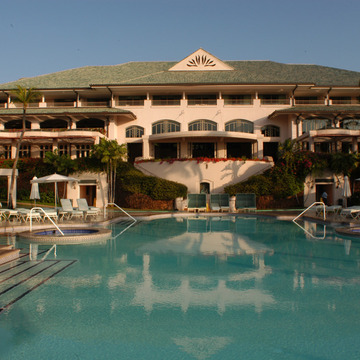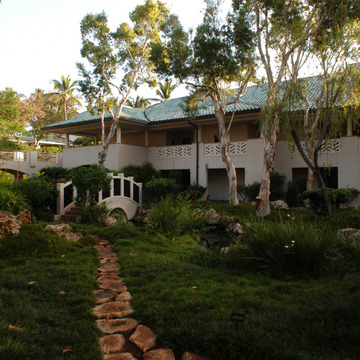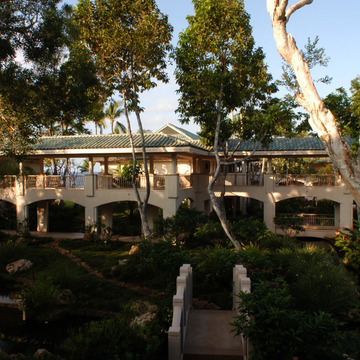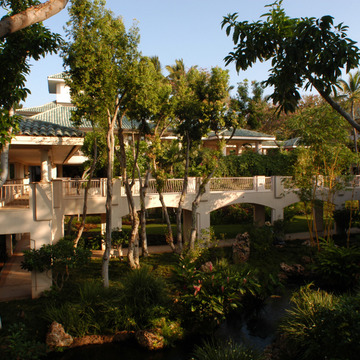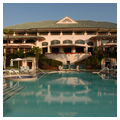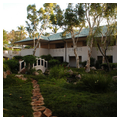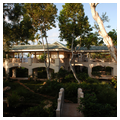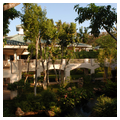You are here
Four Seasons Resort, Lanai at Manele Bay (Manele Bay Hotel)
Overlooking the crescent of Hulopoe Beach, this 250-room hotel comprises a series of cascading villas flanking a main house. Group 70 International revived for this hotel the design program established by C. W. Dickey at the Kamehameha School for Girls (OA2.1). The now ubiquitous Postmodern “Hawaiian” style when sensitively handled can be highly effective, but too often it is employed in cookie-cutter fashion by corporate entities bent on signifying their “sensitivity” to regional architecture. This hotel transcends most of its descendants by moving beyond formal clichés to celebrate the distinctiveness that is Hawaii. The flowing plan, integration with the landscape, dramatic spaces, and attention to detail convey a sense of place simply and directly. The hotel presents the best of both worlds: the opulence of the central Grand Lounge and the Chinese-infused Kailani Terrace is balanced by the open, relaxed Terrace Bar and covered walkways meandering through the three levels of guest rooms. Intimate lounging pavilions mediate the flow of the walkways and the Japanese, Hawaiian, Chinese, and Cosmopolitan gardens, designed by Juli Walters, further enhance the experience of traversing the enclosed outdoor spaces between room and lobby. Below the circular swimming pool terrace, a pathway winds its way down to the ocean, passing the fenced-off remnants of an earlier complex of Hawaiian houses which once dotted these shores.
Writing Credits
If SAH Archipedia has been useful to you, please consider supporting it.
SAH Archipedia tells the story of the United States through its buildings, landscapes, and cities. This freely available resource empowers the public with authoritative knowledge that deepens their understanding and appreciation of the built environment. But the Society of Architectural Historians, which created SAH Archipedia with University of Virginia Press, needs your support to maintain the high-caliber research, writing, photography, cartography, editing, design, and programming that make SAH Archipedia a trusted online resource available to all who value the history of place, heritage tourism, and learning.


